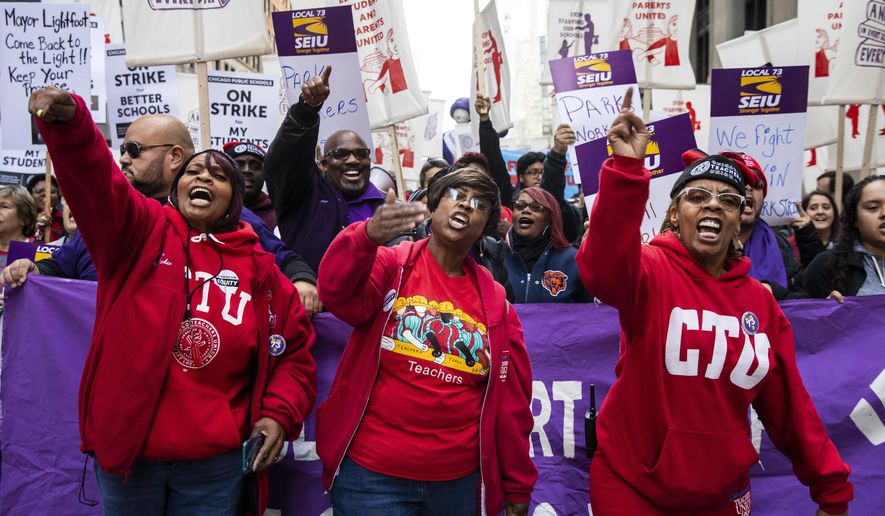OPINION:
The Chicago Teachers Union just told school administrators to get you-know-what, after members decided by vote that being ordered back to the classrooms to provide in-person instruction was too dangerous for these coronavirus times.
These teachers should be fired. Fire ‘em all.
So, too, all the ridiculously coddled teachers in public schools around the nation who are steadfastly refusing to return to the classroom out of some kind of over-exaggerated fear of catching COVID-19.
Everyone else in the world knows how to take basic health care steps in order to resume normal activities — or at the least, somewhat normalized activity. Why not teachers? It’s not the children who are affected by the coronavirus. It’s not even the age range that makes up the majority of the teachers’ population that’s most affected.
The Centers for Disease Control and Prevention wrote this in December: “8 out of 10 COVID-19 deaths reported in the U.S. have been in adults 65 years old and older.”
That, along with “certain underlying medical conditions,” to include cancer, heart conditions, obesity, Type 2 diabetes, pregnancy — these are some of the “increased risk” factors cited by CDC for catching the virus and suffering undue health hardship from the virus.
So, umm, the elderly.
The elderly and those weakened by illness — or, in the case of smokers and the obese, by choice.
The elderly and weak are the ones at higher risk for COVID-19 complications and fatalities.
What a shocker. Not. Sounds pretty much like the equation that comprises a good portion of viruses and health ailments that lead to massive suffering and death — elderly and weak suffer most.
But teachers?
According to 2011-2012 data from the National Center for Education Studies, the average age of teachers in the United States was 42. Roughly 15% were younger than 30 years old; 54% fell between 30 years old and 49 years old; nearly 12% were between the ages of 50 and 54; and almost 19% were age 55 or higher.
Child Trends, meanwhile, reported that in 2017-2018, only 17% of public school teachers in America were above the age of 55 years old; 12% were between 50 and 54 years old; 57% between 30 and 49 years old; and 14% younger than 30.
In other words: They’re not exactly fitting the profile of COVID-19’s most vulnerable. And suggesting otherwise — as this headline, “Nearly one third of U.S. teachers are at higher risk of severe illness from COVID-19 due to age,” as Child Trends wrote in April of 2020 — is hyperbolic.
The only reason teachers get by with staying home from school is because their unions are using the coronavirus to financial and political advantage. The unions are driven by far-left socialists who think nothing of putting kids in harm’s way — of stymying their educational growth, of shuttering their social maturity, of yanking their athletics and stopping their after-school programs and even turning blind eyes to those who are abused, hungry and harassed — the unions think nothing of harming youth this way if it advances their demands for more pay, more money, more cushy work benefits.
If teachers are afraid of going back to the classrooms, they can take their sick days, their personal days, their vacation days and allow substitutes to sit in, instead.
They can exercise personal accountability and take whatever self-protective measures they desire.
They can quit. They can find another job more suited to their delicate fearful natures and quit.
And if they won’t choose one of those options that allow the return to the classroom for in-person instruction? They should be fired.
The unions, of course, would prevent that.
So the only answer is to crush the unions.
Crush the unions. Fire the teachers. That’s the surefire way to get the nation’s children back into schools.
• Cheryl Chumley can be reached at cchumley@washingtontimes.com or on Twitter, @ckchumley. Listen to her podcast “Bold and Blunt” by clicking HERE. And never miss her column; subscribe to her newsletter by clicking HERE. Her latest book, “Socialists Don’t Sleep: Christians Must Rise Or America Will Fall,” is available by clicking HERE.




Please read our comment policy before commenting.